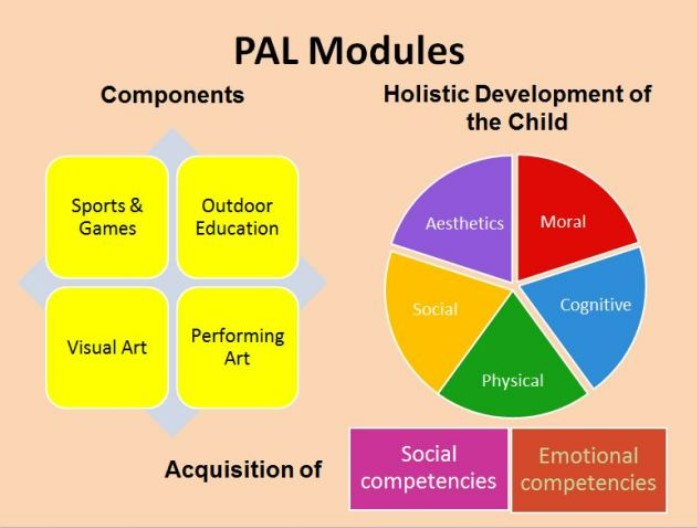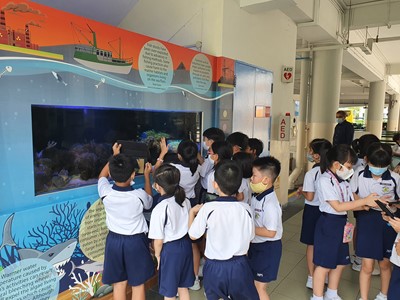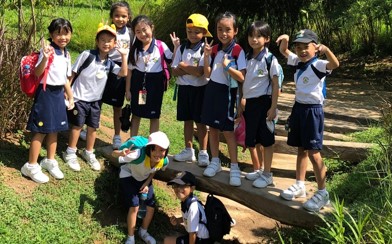PAL Programmes
PAL@JWPS
PROGRAMME FOR ACTIVE LEARNING
PAL@JWPS consists of 4 modules of activities in the two broad areas of Sports and Outdoor Education, and Performing Arts (Music and Dance) and Visual Arts, which are carried out within the curriculum time.
PAL is one of the recommendations of the Primary Education Review and Implementation (PERI) Committee to raise primary education to a new level. The proposed changes seek to ensure that our young are equipped not just with content knowledge, but also with the necessary skills and values to thrive in a fast-changing and globalised future.
PAL is an initiative to address the greater emphasis on non-academic programmes within the curriculum. The greater exposure to Sports and Outdoor Education, Performing and Visual Arts for all Primary 1 and 2 students will facilitate their well-rounded development and help in balancing knowledge with skills and values.

 |  |
 |  |
What are PAL objectives?
Provide broad exposure through fun and varied activities in Sports and Outdoor Education, Performing and Visual Arts
Facilitate the well-rounded development of students in the 5 learning domains (cognitive, moral, social, aesthetics, physical)
Provide varied avenues for students to develop social emotional competencies
What are the characteristics of PAL?
Experiential in nature
Encompasses learning in a creative way
Provides opportunities for children to create
Incorporates character development and social emotional learning
Fun and enjoyable
What are students expected to learn through PAL?
MOE has outlined 3 goals for PAL which provide the purpose for learning through PAL. They are:
Students will exhibit confidence in what they do and express themselves effectively
Students will exhibit curiosity and positive attitudes to learn
Students will enjoy group experiences and teamwork
Based on the goals, there are standards which state the knowledge, skills and behaviours required of the students so as to achieve each goal, and benchmarks which are more specific definitions of standards indicating developmentally appropriate targets for the level.
PAL in JWPS
PAL provides students with more opportunities to participate in activities related to Sports, Outdoor activities, Performing and Visual Arts. It is another platform to help students further discover their interests. Exposing students to a broad range of non-academic activities from a young age will facilitate well-rounded development.
It also complements the academic subjects of Art, Music and PE, and provides the platform for students to extend, reinforce and apply their learning through a wide range of activities in Sports and Outdoor Education, Performing and Visual Arts.
The 4 areas, (Sports and Outdoor Education, Performing and Visual Arts) should be distinct from each other in the PAL programme as far as possible. Schools should seek the advice of the relevant MOE Specialist in each of the 4 areas on how a module in a certain area can be integrated with another. As for integrating PAL modules with academic subjects, it is not advisable to do so as the distinct characteristics of a PAL module would be diffused when it is subsumed under an academic subject.
What is the difference between PAL and CCA?
The current CCA structure provides students with the opportunity to specialise in a CCA of their interest and is conducted outside of curriculum time. PAL provides students with broad exposure to a variety of activities in the different areas, through modules each lasting between 7 to 10 weeks within curriculum time.
Can students opt out of PAL?
PAL is not an enrichment activity. Students will not need to utilise any funds, for example Edusave, to pay for their participation in PAL. Hence other than those with medical reasons, all Primary 1 and 2 students are expected to participate in PAL activities.
Teachers conducting the PAL lesson would be able to include the student in the activities that are appropriate for him/her. The activities would be adapted to suit the student’s condition so that he/she can benefit from PAL. For example, students with heart problems will still be involved in the group discussions and reflections as well as have opportunities to share their experiences in the activities.

